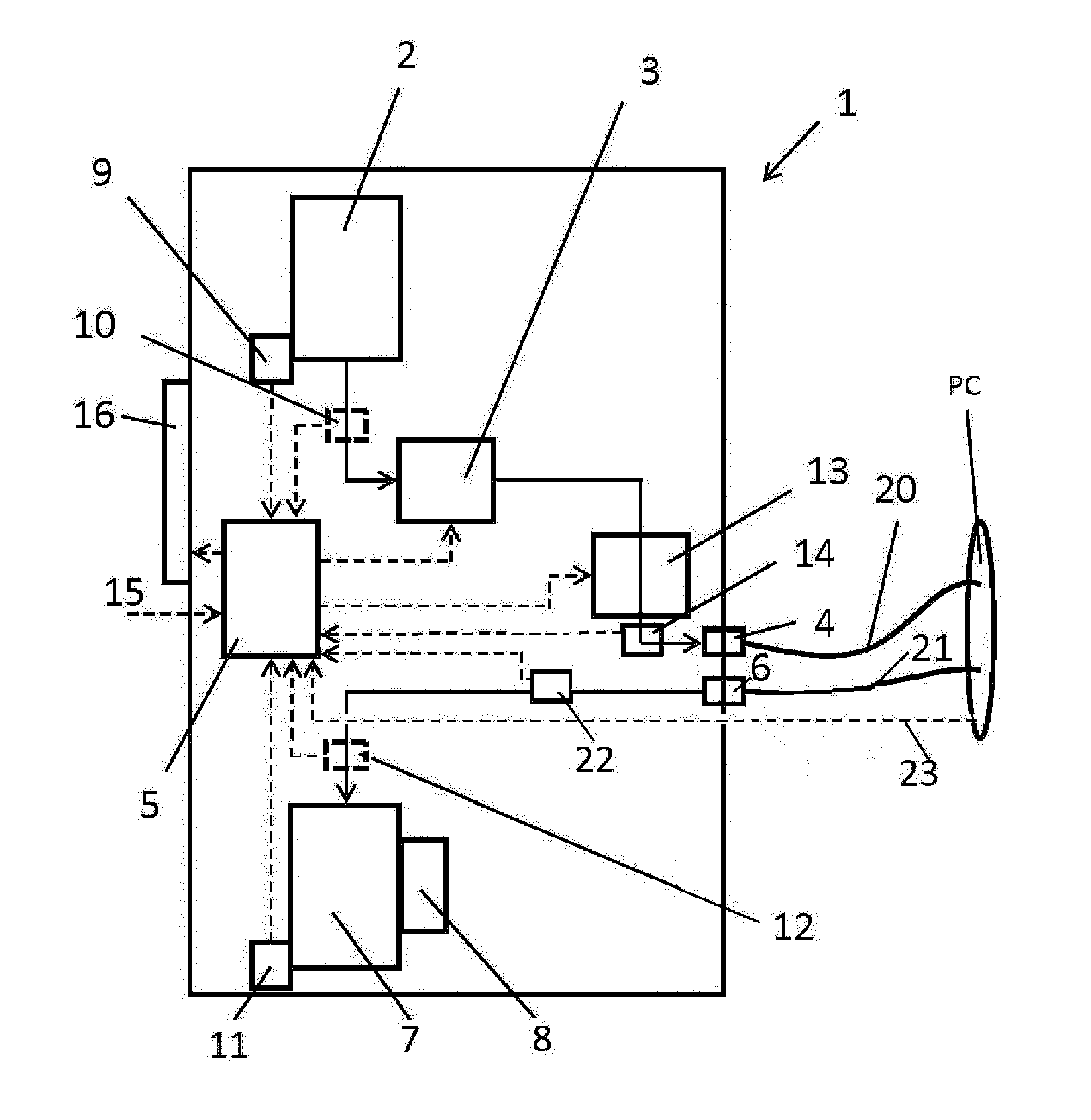System for flushing a pericardial cavity
a pericardial cavity and flushing technology, applied in the field of flushing systems, can solve the problems of increased mortality and morbidity, increased costs, and excessive postoperative blood loss, and achieve the effects of reducing postoperative bleeding, enhancing the flushing effect, and provoking a cardiac tamponad
- Summary
- Abstract
- Description
- Claims
- Application Information
AI Technical Summary
Benefits of technology
Problems solved by technology
Method used
Image
Examples
Embodiment Construction
[0104]FIG. 1 shows schematically a pericardial flushing system, generally denoted by reference numeral 1. The flushing system 1 is configured for continuous flushing of the pericardial cavity, in particularly as a post-operative treatment. During continuous flushing of the pericardial cavity infusion liquid is pumped into the cavity to dilute blood and clots present in the cavity. At the same time effusion liquid, i.e. a mixture of blood and infusion liquid mixed in the pericardial cavity is drawn out of the cavity in order to remove the blood and clots from the cavity.
[0105]The flushing of the pericardial cavity is preferably started directly after operative treatment and is for example continued for 12-24 hours.
[0106]Such continuous flushing may for example be used to flush a pericardium of a patient after cardiac surgery, and may have a reducing effect on postoperative bleeding.
[0107]The flushing system 1 comprises one or more containers 2 containing infusion liquid, for example ...
PUM
 Login to View More
Login to View More Abstract
Description
Claims
Application Information
 Login to View More
Login to View More - R&D
- Intellectual Property
- Life Sciences
- Materials
- Tech Scout
- Unparalleled Data Quality
- Higher Quality Content
- 60% Fewer Hallucinations
Browse by: Latest US Patents, China's latest patents, Technical Efficacy Thesaurus, Application Domain, Technology Topic, Popular Technical Reports.
© 2025 PatSnap. All rights reserved.Legal|Privacy policy|Modern Slavery Act Transparency Statement|Sitemap|About US| Contact US: help@patsnap.com



